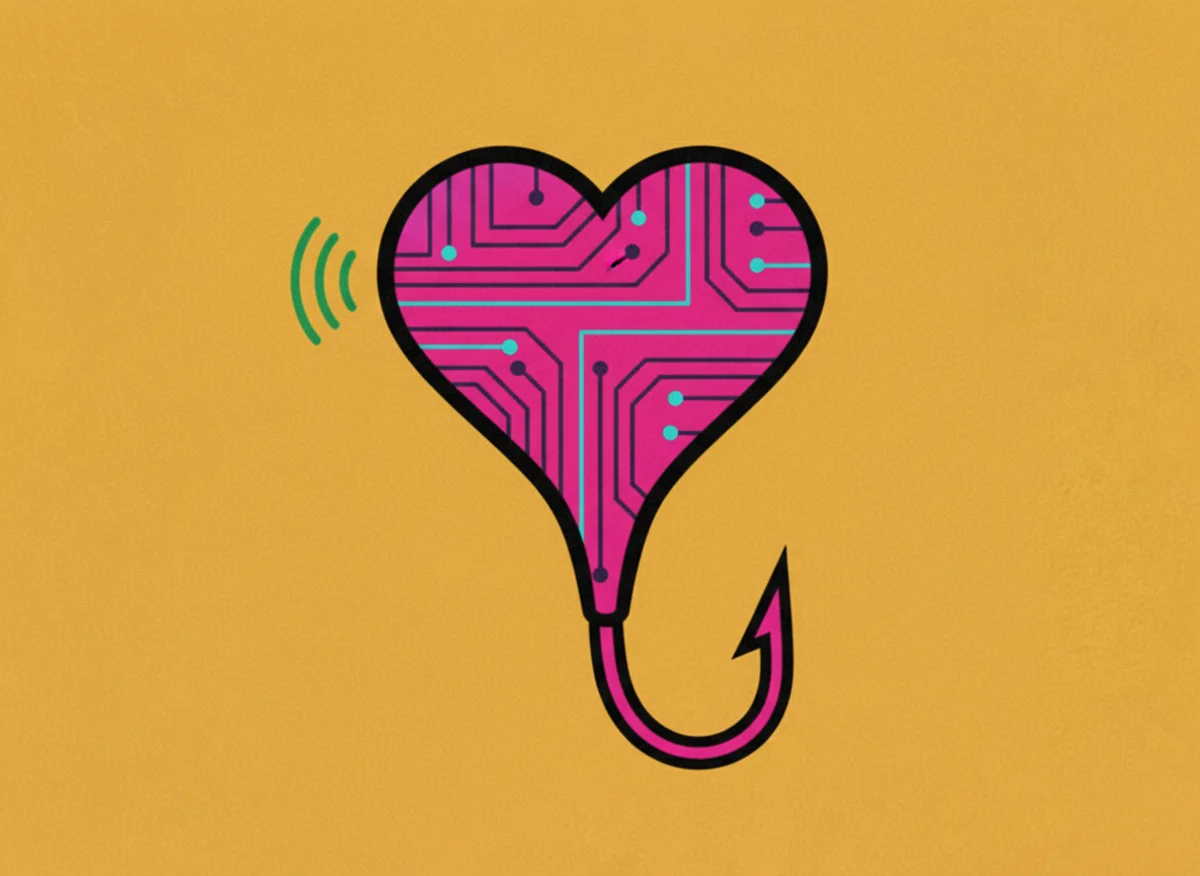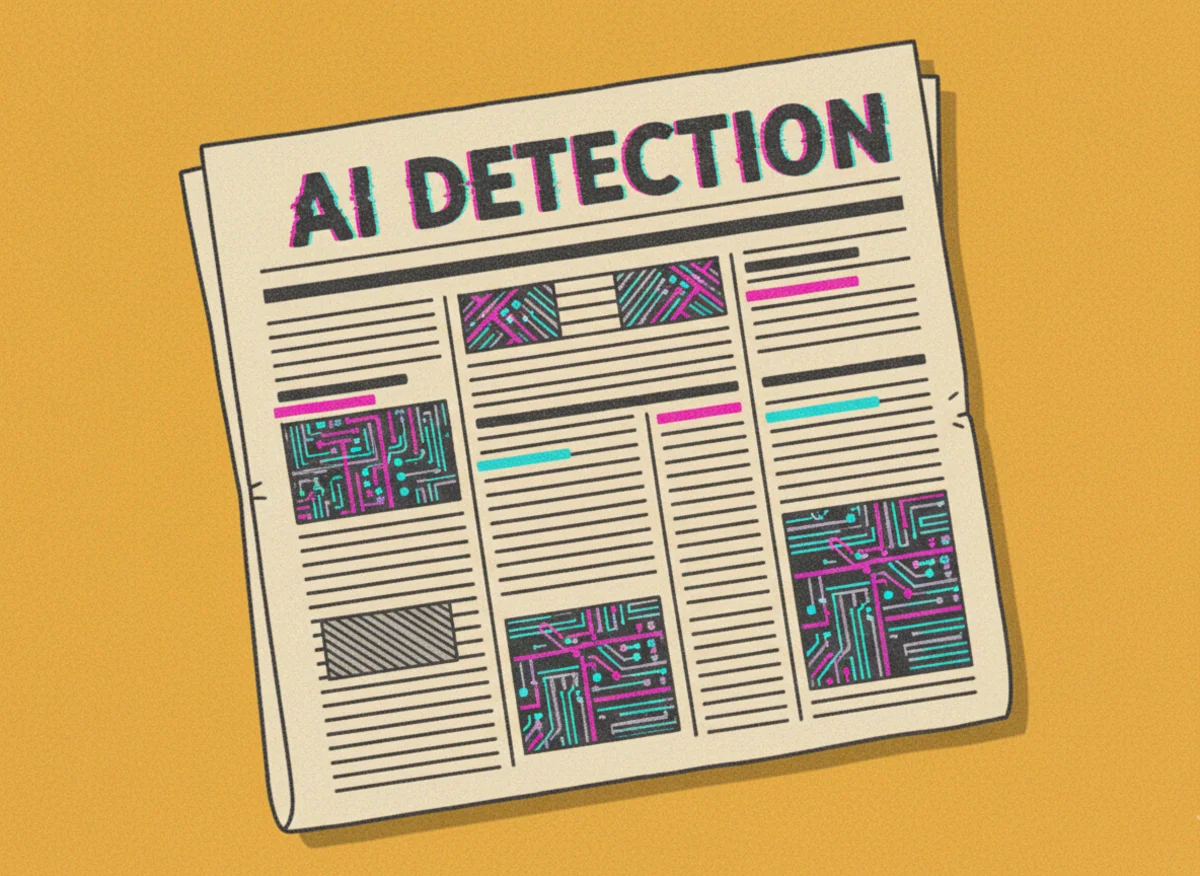AI text detection has never been so easy...
Yet so hard
Business Email Compromise (BEC) is considered a prevalent form of phishing. This is a type of a cyberattack where fraudsters mimic an email from a trusted authority (CEO, executive director, vendor, etc) to trick an employee into sending money or revealing any secret details about the company. AI text detector can easily identify such phishing emails, but these scams usually manipulate people's psychology.
Last year this type of scam stole around $2.8 billion. Fairly speaking, that's pretty understandable. You try to do as much as possible when your furious boss asks you urgently, aren't you..?
But the thing is… 40% of BEC emails were AI-generated. So, there was a chance to detect AI-generated content and prevent the leaks. At least in 40% of those cases.
In this guide we are talking text detection. And no—it's not only those em dashes that you immediately pay attention to these days.
Why detecting AI-generated content matters in 2025
What do you think these recent cases have in common?
- BEC scams: This type of business email steals billions of dollars from companies by tricking employees into responding to urgent ‘emergencies.’ These scams are more common in international companies, where it’s easier to create a believable backstory.
- Australian Catholic University flagged nearly 6,000 students for alleged AI-assisted cheating in 2024. Although many cases were later dismissed due to overstatements, the damage to students’ reputations was already done.
- AI-generated phishing: 20% of users reportedly click on links in AI-generated phishing emails, leading to loss of money, stolen personal data, or downloading viruses and harmful software.
A second for you to think…
Well, yes, all of these cases used AI-generated text for fraud or AI text detection which was not accurate enough.
We are getting used to deepfakes, scam videos and images. The text is generally not considered such a dangerous tool. But in reality it definitely is. And text generation is used even broader than other types of generation (such as video or audio fakes).
The quantity of AI-generated articles on the Internet has surpassed the amount of human-written content. According to Graphite.io research, for October 2025 the AI-generated texts take around 52% of the articles published online.
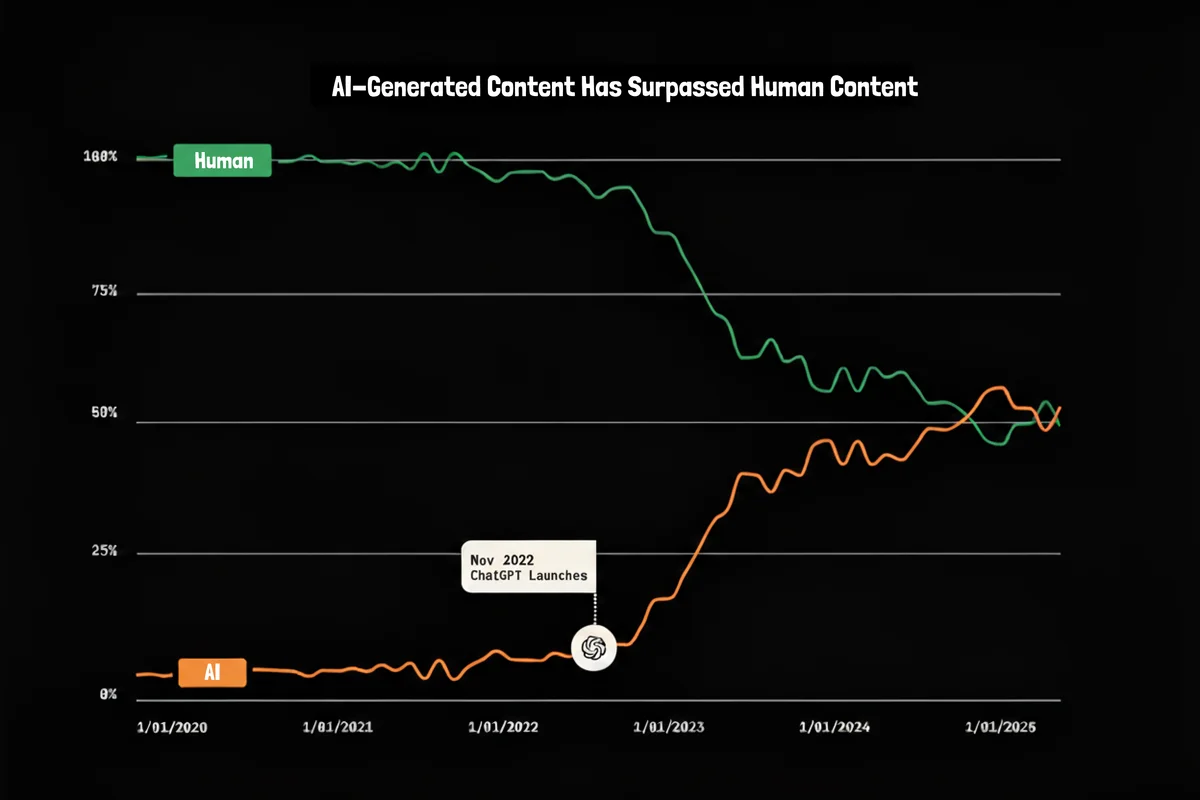
What does it mean to us?
Well, the Internet is not the territory of the absolute truths, even if at once it was. You'd better not trust any information and any article, fact check and use AI content detection tools. But this leads us to a broader problem. Broken trust online. One slick AI essay or phishing email can undermine confidence in schools, businesses, and media. In a world already jittery about 'fake news,' undetected AI text can turn skepticism into cynicism. Do we really need it?
What is AI text detection and how does it work?
So, in theory, AI text detection is the supposed process of telling whether something was written by a breathing human… or a silicon-based chat-bot. Unlike our old friends plagiarism checkers (that are focused only on whether you've stolen anything), these new guardians look for hidden robot 'fingerprints.' But what are those in a text?
In the first place, when checking any content, including the text, AI content detectors try to recognize the patterns behind the plain result. In a text these are repetitive phrases, consistent sentence structures, or specific word usage frequencies. Because even though AI is 'intelligence', it's still 'artificial'. Any model is taught on huge datasets that have structure and order. That's why different words fall under different categories: for an article, for a cooking recipe, for a speech script, etc. And when it's time to generate any text, the AI chooses the most suitable words for any expression.
Here is where isFake AI text detector enters the stage. Our model was taught on huge datasets of both human and AI written texts and now is ready to become your personal pocket Sherlock Holmes. Good thing: it will not play violin during the nighttime.
isFake AI text detector not only identifies an AI text, but also can highlight the most suspicious parts of it. As a result of detection you will get a score which is shown in % below the text you've uploaded. Basically, the confidence score reflects the model's level of confidence that the text was AI-generated. If it says 99%, our model is almost sure that the text was fully taken from AI. If it shows 60%, it's still a red flag, but there're probably parts of the text that were not created by bots.
For more details, we have an article on How to read the results
Common scams and deepfake scenarios
Fake political news
Fraudsters generate 'viral news' and scripts for politicians' deepfakes using generative AI. Those texts can ideally mimic political style and wording. But there's no chatbot that can hide from isFake ChatGPT detector…
CEO fraud & financial scams
Storytime: in 2024 finance worker from Hong Kong paid out $25 million after falling for deepfake 'chief financial officer'. Later on, with the investigation conducted, it turned out that the scripts and emails the employee had received were generated with AI. This was such an epic steal, even movie rights might be pending. But jokes aside, the tragedy could have been avoided if the company or the employee himself used an AI writing detector to check for AI in the emails and messages.
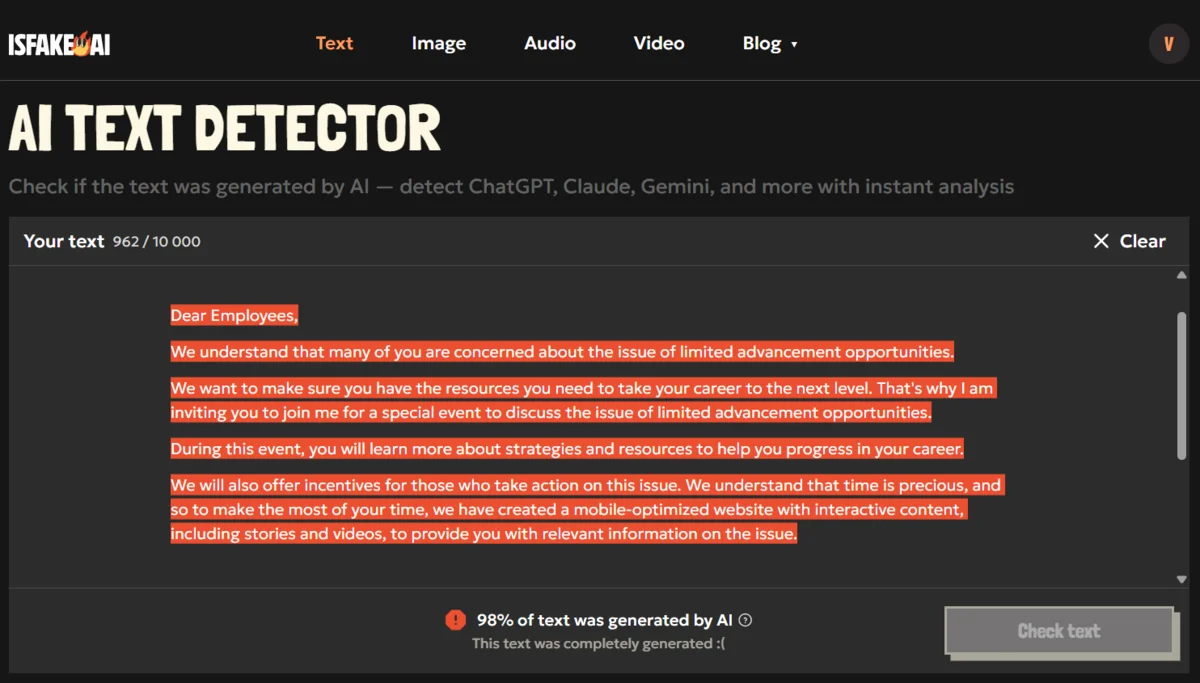
That's how our tool works. This particular example was taken from an open source as we have not received any 'real' AI-generated phishing emails yet. But this one right here shows the AI-generated text detector perfectly.
Romance scam
Back in the day romantic chemistry was a thing. Now it's more of a computer science and machine learning.
One of the recent cases shows Steve Burton deepfake, who 'fell in love' with his victim and eventually asked her for financial help. It resulted in $80k lost to fraudsters. Full story in our article.
The thing is all of that started with messages. Simple text messages. They were generated with AI, used psychological tricks and skillfully integrated personal information about the victim's life. That could and should have been checked with an AI generated content detector.
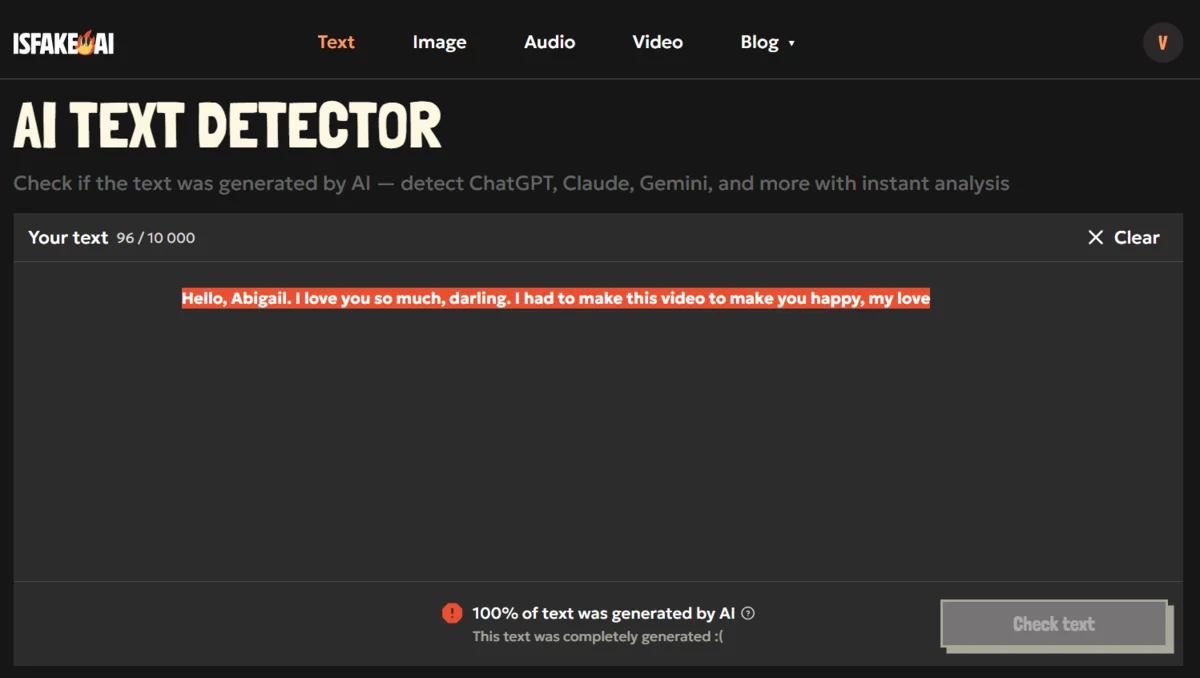
Even this small phrase, taken from one of 'Steve Burton' videos, gives out AI immediately.
Academic inequity and cheating
Yes, students and professors still struggle with AI-generated essays and articles. AI text detector is always ready to help you with suspicious contents, potential scams and frauds. Just upload it online on our website and get the result in seconds.
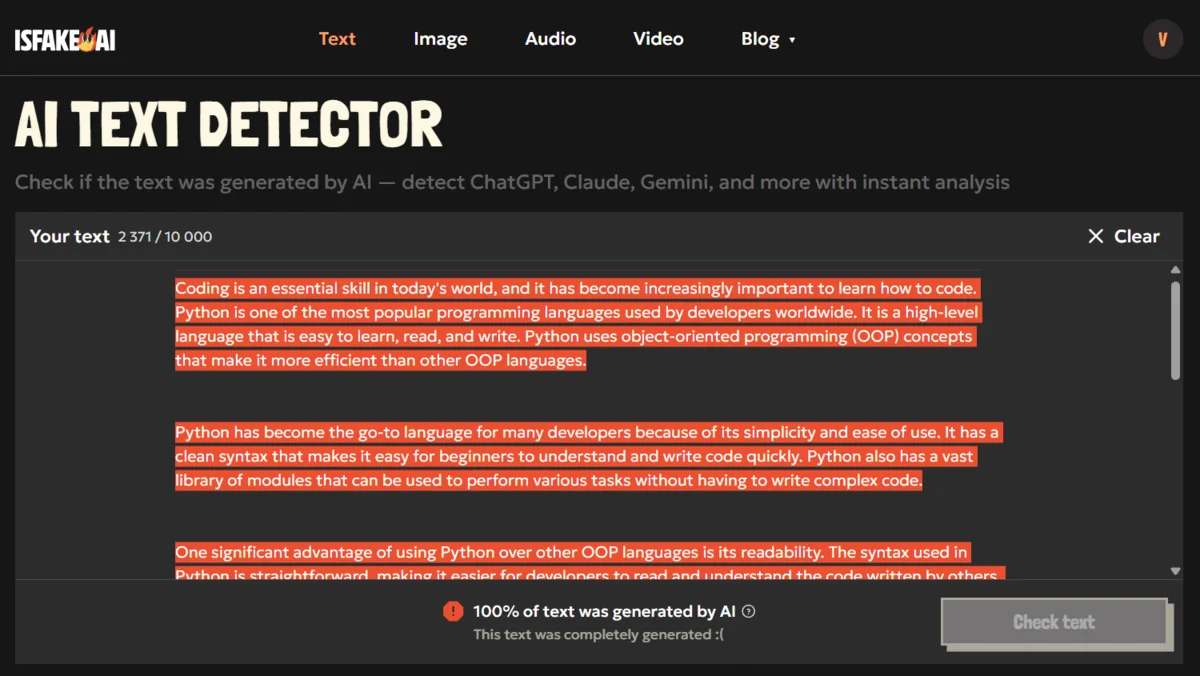
Source: The Good AI
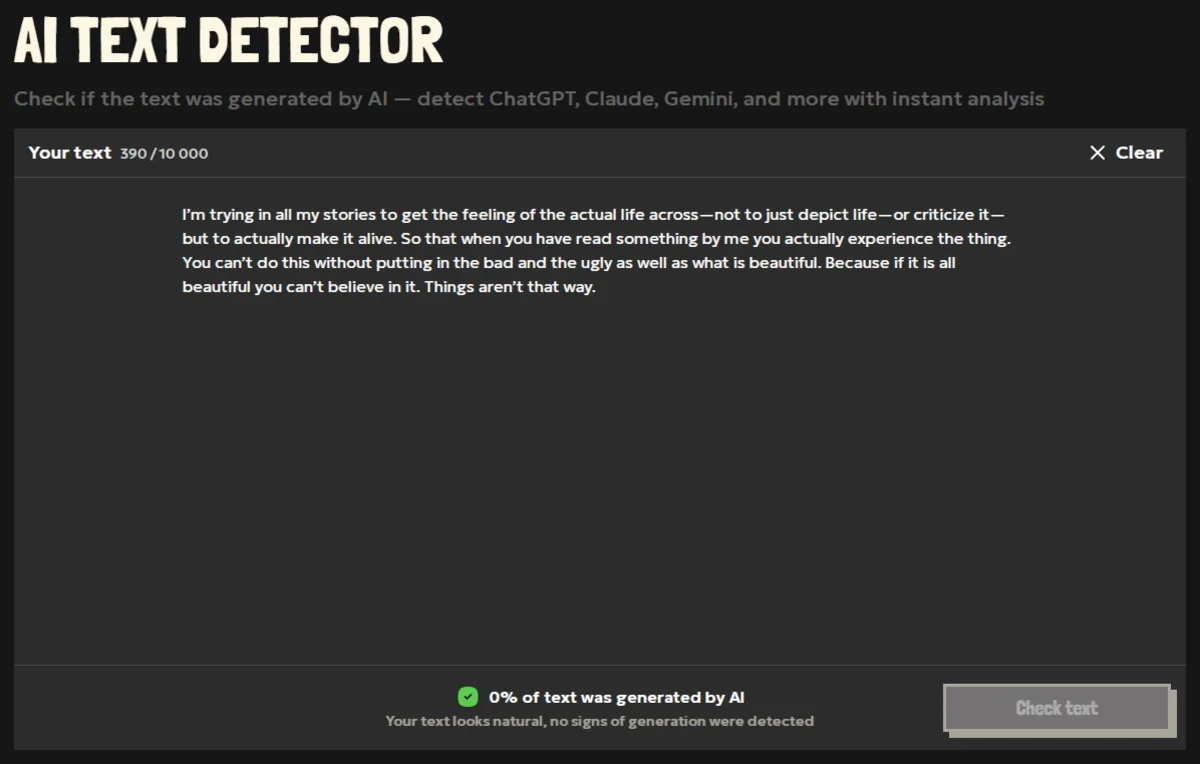
Check your works and the works of your students with our free AI detector that can even highlight the suspicious fragments.
How to protect yourself from AI fraud
For regular people and individuals
- Always cross-check wild claims such as political or financial statements (using reputable sources, not your gut!)
- Remember that AI tools are everywhere and available to everyone. Don't trust everything you see or read on the internet. Also please remember if you question yourself is this AI, check it with an AI text detector.
- Brush up on 'AI text checklist' below.
- Don't forget to educate and share with your friends and relatives. AI awareness becomes an important issue these days, with many older people getting more vulnerable to fakes and online scam. Keep your loved ones safe.
For businesses
- Train employees on AI-phishing red flags. You're more than welcome to use isFake ai for your whole team!
- Train employees to spot a bot from a boss. Usually, these are not the same things. Try to introduce specific email communication rules inside your company. That would give you and your coworkers some safe space.
- Use an AI text detector for all the messages considering money transfers. Just copy and paste a bunch of messages into isFake text detector. A couple of seconds and here your result goes!
But don't forget that the text is not our only area. We also detect AI in images, video and audio.
How to spot AI-generated text manually
Yes, AI content detector is always here to protect you from any scam. But out there in the wild it might be dangerous. So before we let you out there, in the endless world of the Internet, we want to make sure you remember the main markers of an AI-generated text:
- Too stylish quotes like « » against simple human-used ' ' and " " plus excessive use of colons, em dashes and parentheses. Humans prefer commas or just a new sentence.
- Even sentence length and repetitive grammar structures. That eerie feeling of a machinery rhythm when you try to read it out loud.
- Overload of linking words like 'in general', 'however' or 'importantly'.
- Summing up in the end. Humans usually just finish their utterance and stop.
- Repetitions in words and ideas. AI thinks that this way it adds 'clarity'. Humans find it annoying.
- Weird emojis that pop up randomly and (sometimes) in pairs 👀✨
- No personal stories or real feelings. Every suggestion is general and every statement is overall. If you're getting confused, try to imagine the human behind the text. Who is it? What are their interests and hobbies? Are they kind or mean in life?
But even with all those facts, your eyes cannot act like an AI text detector. You are not a robot, so it's always better to double-check with real AI detection tools.
How to check text using isFake.ai
Checking with isFake is quick and simple:
- Upload your text
- Press 'Check text' and give it a couple of seconds
- Get fast and accurate results of the detection
- Here's everything you need to know about reading the results
- Share with your family, friends and colleagues. Let your loved ones know that AI is not the future. It's our present.
